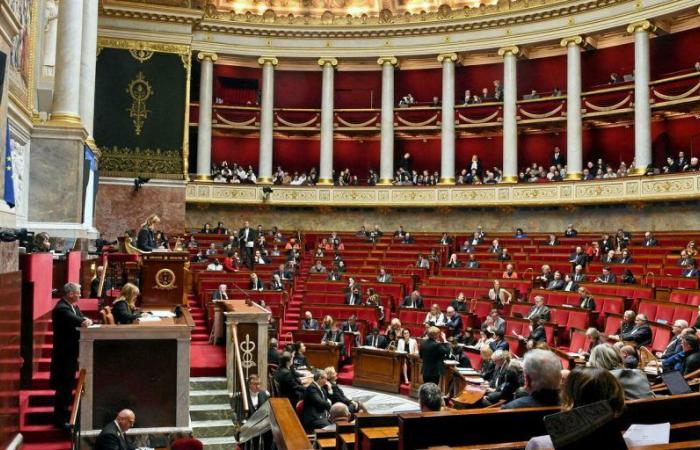L’will the extreme right become a majority in the National Assembly? If, during the European elections, Jordan Bardella’s party rose well into the lead (31%), our latest Cluster17 survey-Point before the legislative elections of June 30 and July 7, credits him with 29.5% of the votes, neck and neck with the left bloc of the New Popular Front, which would obtain 28.5% of voting intentions.
Every Thursday at 7:30 a.m.
Receive a preview of information and political analyzes from the Point editorial staff.
THANKS !
Your registration has been taken into account with the email address:
To discover all our other newsletters, go here: MyAccount
By registering, you accept the general conditions of use and our confidentiality policy.
Projected in terms of seats, the RN would elect between 195 and 245 deputies. Less than the Ipsos poll, commissioned by LR last December, which gave a large, even absolute, majority to the RN (between 235 and 305 deputies). As a reminder: the National Rally has 88 outgoing deputies.
As for the New Popular Front, the range of parliamentarians would be between 190 and 235. “A priori, the RN is off to a good start. He will be in the second round almost everywhere, explains political scientist Olivier Costa. There will be few triangulars, because we need to make 12.5% of those registered to go to the second round. This is the great difficulty for the Renaissance candidates, caught between the left and the RN. Macron’s calculation was to move quickly so that there was no agreement on the left and to attract social democratic voters to his side. This popular front is a disappointment for him. »
Glucksmann voters in favor of the New Popular Front
According to our survey, 64% of Raphaël Glucksmann’s voters say they are in favor of the left alliance. “The majority of left-wing voters favor the New Popular Front,” observes Jean-Yves Dormagen, founder of the Cluster17 institute. A third of Glucksmann’s voters will not vote for the New Popular Front. 12% announce a diverse left vote and 15% Renaissance. »
At 18% voting intentions, the presidential camp would divide its number of seats by more than three (70) or would constitute a weakened battalion of 100 deputies, far from the current (relative) majority which included 249 Macronists. The Republicans would constitute a group oscillating between 25 and 35 deputies. The European LR electorate is divided on the alliance between the RN and LR, supported by Éric Ciotti: 47% are in favor and 49% are unfavorable. Their voting intentions are dispersed between LR (74%), Renaissance (10%) and the RN (6%).
“Renaissance becomes the useless vote”
The tripartite division of the political field between a central bloc, the left and the extreme right seems to be called into question. “We are in a bipolarization and a half between the New Popular Front, the RN and a Renaissance party which is very weakened,” explains Jean-Yves Dormagen. Renaissance will have difficulty remaining in the second round in most constituencies. They become the useless vote. Renaissance only captures six out of ten Emmanuel Macron voters. There will especially be duels between the left and the RN. »
Even if Renaissance’s electoral base has shrunk, concentrating in particular among retirees, the most educated and the wealthiest, it is they who hold the keys to the campaign, according to Jean-Yves Dormagen. “Depending on whether they vote for Renaissance or the New Popular Front, they will maintain the tripartite or accelerate bipolarization. They will be the arbiters between the New Popular Front and the RN. Currently, among those who choose, they will vote in three cases out of four for the New Popular Front. »
Towards an increasing participation rate?
The participation rate will be central to the results. In the Cluster17 survey, 60% are sure to vote. A higher participation rate than during the 2022 legislative elections (46.2%). “You have to be careful when making electoral predictions,” notes Jean-Yves Dormagen. In this election, small moves produce big effects. With more participation, there would be more triangulars. If Renaissance gains 2%, that changes its qualifying potential and chances of getting seats. There are at least 100 districts that are extremely undecided and could swing one way or the other. » Response on July 7.






